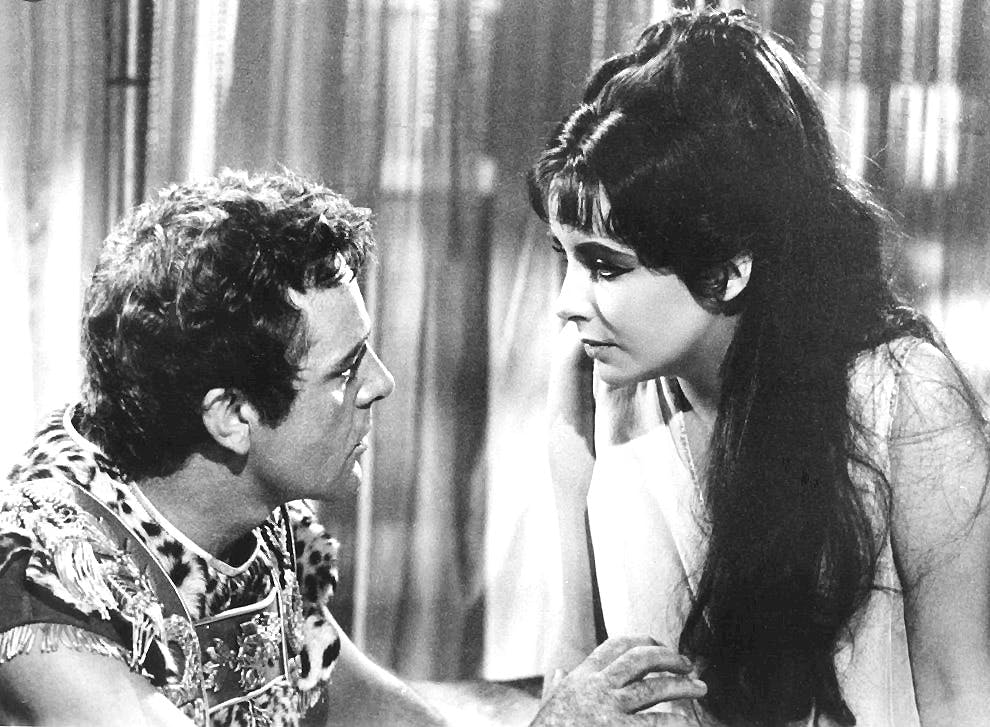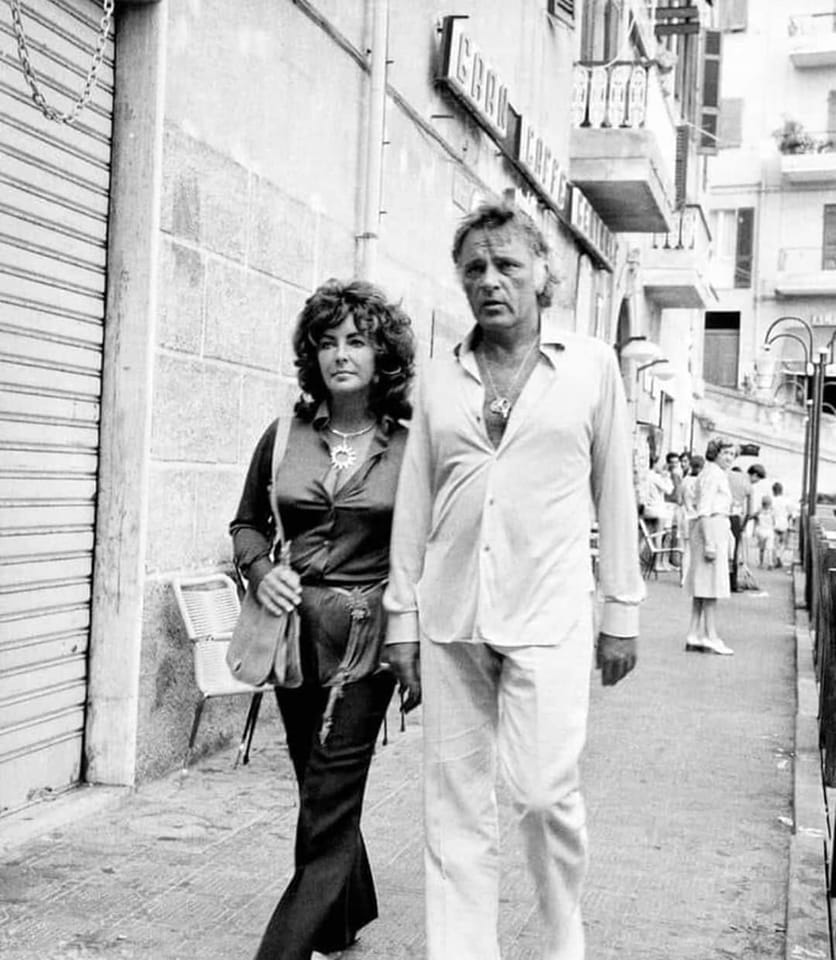The Antony and Cleopatra of the Modern Age? Think Richard Burton and Elizabeth Taylor
The Taylor-Burton alliance is hardly a new subject, but Roger Lewis brings his own special form of brio to every page of ‘Erotic Vagrancy.’

‘Erotic Vagrancy: Everything about Richard Burton and Elizabeth Taylor’
By Roger Lewis
Mobius, 608 pages
Roger Lewis, with a keen eye for what matters about his subjects, quotes Sylvia Plath: “Liz Taylor is getting Eddie Fisher away from Debbie Reynolds, who appears cherubic, round-faced, wronged, in pin-curls and house-robe — Mike Todd barely cold. How odd these events affect one so. Why? Analogies.”
Mr. Lewis makes plenty of analogies, including characterizing Elizabeth Taylor and Richard Burton as the Antony and Cleopatra of the modern age. Burton was the next husband after meek Eddie Fisher, who had been a friend of brash movie producer Mike Todd, who died in a plane crash shortly after marrying Taylor.
Elizabeth Taylor was always looking for a man who could tame her (which is one reason Fisher did not work out), so that she could, in turn, tame him. Burton wanted to live on a grand scale, and when he appeared opposite Taylor in the film “Cleopatra,” he left his first wife and never looked back.
The Taylor-Burton alliance is hardly a new subject, but Mr. Lewis brings his own special form of brio to every page. How does the biographer do it? He has read all the Taylor-Burton biographies, draws on them, quarrels with them, and points out their errors and discrepancies while explaining why a conventional biography simply won’t do.

“Erotic Vagrancy” is about obsessions with sex and fame and luxury, making Taylor and Burton vagrants on a worldwide scale who come to grief, as Antony and Cleopatra do, in a kind of romantic displacement — with Burton adrift from his native Wales and Taylor seemingly born adrift in the make-believe of Hollywood, an unfixed world that she conquered with a towering ego that mesmerized Burton and put him at her mercy.
For Mr. Lewis, the Taylor and Burton story can never be over, which is what is wrong, he argues, with chronological biography, in which we go phase by phase through the subjects’ lives as if something has been settled. The point about the couple, though, is that they are unsettling and unforgettable and can be portrayed only in a cyclical account of the cyclical comedy and tragedy of their two marriages — not unlike what we get in their celebrated portrayals of George and Martha in the film of Edward Albee’s “Who’s Afraid of Virginia Woolf?”
Franco Zeffirelli’s “The Taming of the Shrew,” starring Taylor and Burton, is the Shakespearean drama of dominance and submission that is never over with this twice-married contentious couple. They lived extravagantly, with private jets and jewels valued in the millions of dollars, and in films that were extensions of the scenes played out in their not so private lives.
In this exciting biography, I felt an immediacy that put me alongside Mr. Lewis, who never lapses into the passive voice for long. For him, the Taylor-Burton romance of marriage and re-marriage is an achievement in itself that belittles carping about the many Shakespearean plays Burton did not do because he was in thrall to Taylor, corrupted by Hollywood, stardom, and living large as a legend.
Mr. Lewis comments on classical actors of Burton’s generation who went on to respectable careers that could have been Burton’s. To say that he demeaned himself by going Hollywood is, in Mr. Lewis telling, a very small truth compared to the larger one of an actor and his consort who dazzled Plath, me, and millions of the movie mad who wondered what it would be like to jettison the conventional, just as Mr. Lewis renounces the requirements of orthodox biography.
At any moment in “Erotic Vagrancy,” we may be in the childhood of Burton’s Wales, or of Taylor’s Hollywood youth, or aboard a boat with a Greek grandee.
Here’s a specimen of Mr. Lewis’s style:
“Their lives, shut and locked: the Venice Film Festival, and being entertained by Onassis on his yacht, where the bar stools were upholstered in whale foreskin; parties thrown by people with names like Countess Marina Cicogna or Florinda Bolkan; the Roman nobility visiting the studios to watch the Cleopatra shoot, as Parisians once spent an hour’s diversion at the morgue; a reception at Kensington Palace on 23 June 1971, where Princess Margaret said of the Krupp Diamond, ‘How very vulgar,’ and Taylor replied, ‘Yeah, ain’t it great. Want to try it on?’ Ma’am Darling did so. ‘Not so vulgar now, is it?’”
Mr. Rollyson is the author of “Ronald Colman: Hollywood’s Gentleman Hero” and “Marilyn Monroe: A Life of the Actress.”

